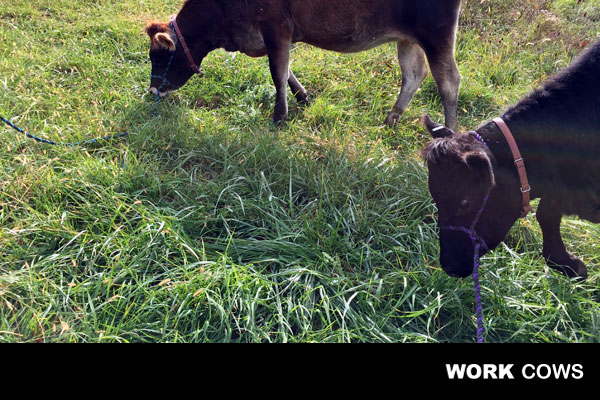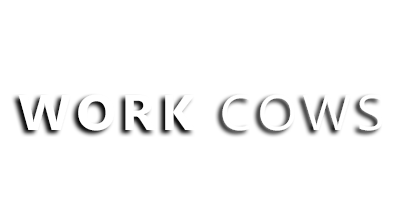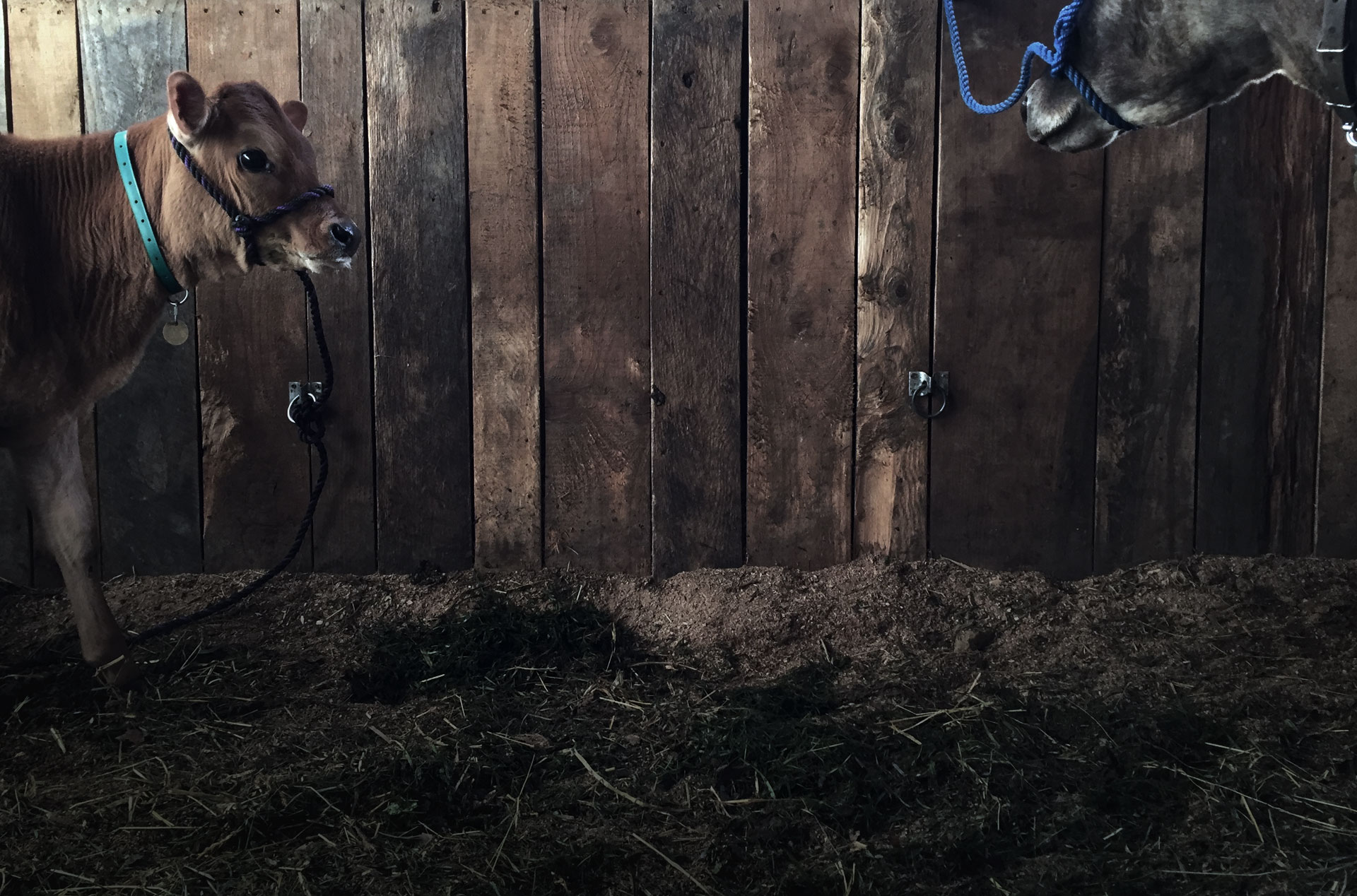
01 Dec Lawn Moo’ers – How Working Cows Help with Mowing & Clearing on the Farm
Another facet of a carefully selected, properly trained working cow is her ability to use her natural traits and instincts to assist the farmer with mowing, clearing brush and pruning unwanted vegetation. Given the opportunity, a cow will naturally spend a significant portion of her day eating a wide variety of long-stem grasses, foliage and fibrous vegetation. During the spring, summer and early fall when these plants are growing, the farmer can save time, labor and money by allowing the cow’s natural urge to graze to assist with clearing and mowing chores.
Teamwork Provides Benefits for Both the Farmer and the Working Cow
Maintaining the grounds of a farm or homestead is similar to keeping the yard of a suburban home neatly cut and trimmed – except that the farmer’s “yard” is much, much larger and includes barns, sheds, lanes, fencelines and more.
By partnering with a working cow, the farmer can save labor, time and the expense required to operate mowers, tractors and other machinery. The cow’s reward for performing this work is a veritable feast of grasses, weeds, plants and foliage that she finds both delicious and nutritional.
Tasks Well Suited for the Working Cow
One or more working cows, when properly trained, can easily help farmers and homesteaders with time-intensive chores, such as:
- clearing the family garden plot after the last harvest of the year
- keeping grass and weed growth under control in orchards and along fence rows, lanes, utility easements and ditch lines
- mowing in areas where the terrain is not easily handled with machinery, such as pond banks, steep inclines, rutted or rocky land
- mowing grass around the home and other buildings
When working cows are used for landscaping duty, they can be managed in several ways, depending on the task to be accomplished, as well as what else needs to be done around the farm. Temporary electrical fencing with step-in posts can be erected in minutes and are effective at keeping the cows from grazing away from the preferred area. Some farmers prefer to tether their animals to a post, fence, tree or screw in anchor in the area, but this should be only be done when the cow is being occasionally monitored to ensure she does not become tangled.
Always Inspect the Area Carefully
Before making a decision to allow your cow to help with mowing and clearing chores on any part of your farm or homestead, it is important to inspect the area for any materials she might ingest that could be harmful. These include:
- trash and debris, such as plastic bags and baling twine (plastic items are not digestible and can block rumen activity and create digestive issues or cause blockages, all of which can be life-threatening)
- small metal objects, such as nails, screws and pieces of wire that could be picked up during grazing, swallowed (consuming any type of sharp metal object can result in a cow suffering hardware disease, a painful, often fatal condition)
- plants, trees and other vegetation poisonous to bovines, such as wilted cherry tree leaves on a cut or broken branch, oleander and many other types of common plants across the nation (some poison plants result in illness, but many are fatal – this basic list of plants known to be poisonous to cattle is helpful, but remember to learn what poisonous plants are specific to your area to be safe)
Summer is grass mowing season. You may consider harnessing the power of a bovine mower or two.

